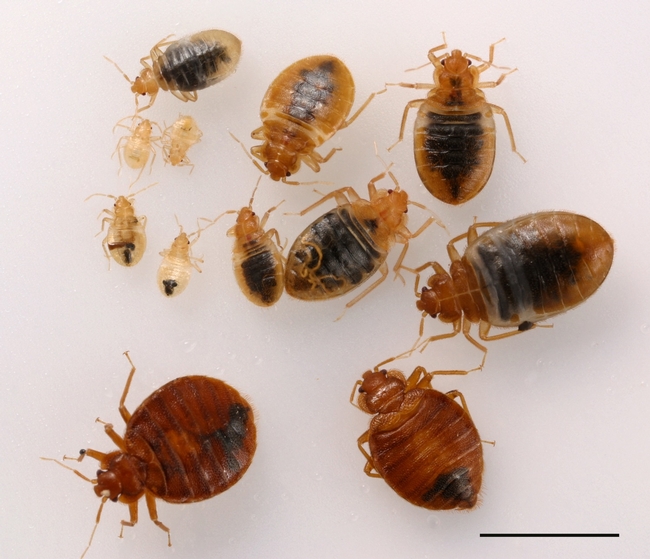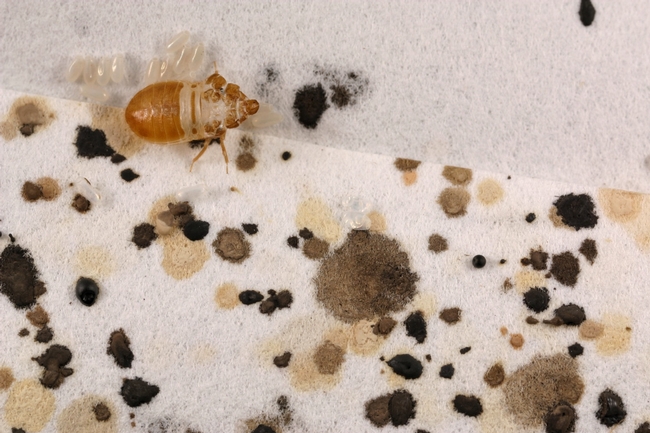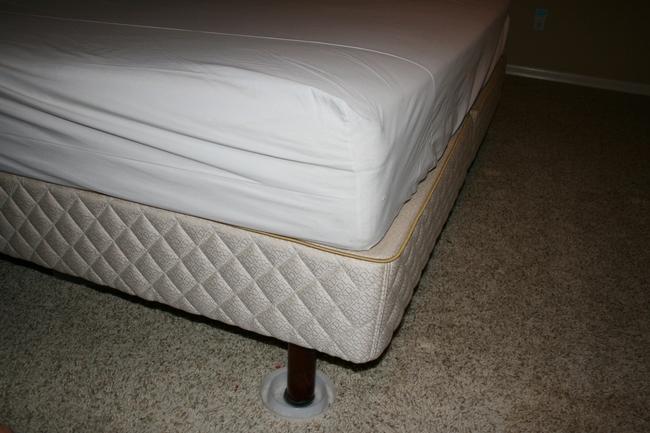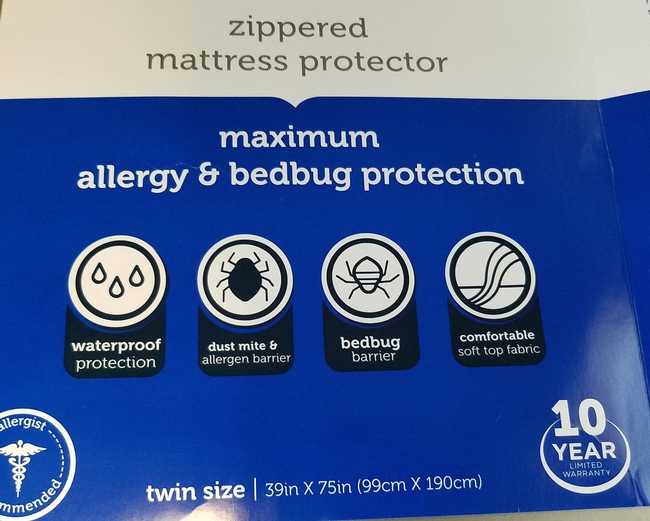[From the Summer issue of the UC IPM Retail Nursery & Garden Center News]
Fig 1. Adult and nymph bed bugs. (D.-H. Choe)
You could be looking for do-it-yourself (DIY) ways to manage bed bugs, and see that many stores may carry dozens of products claiming to provide cheap and easy bed bug control. Research has shown, however, that bed bugs are very difficult to eradicate, even for knowledgeable professionals equipped with advanced pest control methods. So how can you be successful?
Know Your Rights as a Tenant
Fig 2. Fecal spots and shed exoskeleton are useful signs of bed bugs. (D.-H. Choe)
Identify the Problem
Bed bugs cannot be confirmed by dermal symptoms (“bites,” wheals, or rashes). The bugs themselves or their signs; such as cast skins, fecal spots, or eggs (Figure 2); must be recovered to positively identify the problem and move forward with pest management. For help identifying a bed bug infestation go to the UC IPM Pest Notes: Bed Bugs.
You can confirm a bed bug infestation by using bed bug monitors. Many models exist, though the most effective may be “interceptors,” pitfall traps that can be placed under the legs of beds and other furniture items (Figure 3). For more on bed bug monitors, read the ‘Pests in the Urban Landscape' blog article entitled “Bed Bug Monitors.”
Promote Nonchemical Tactics
Fig. 3 Interceptor monitors can help you detect where bed bugs may be present. (D.-H. Choe)
Mattress encasements (Figures 4a. and 4b.), fine-mesh cloth covers for mattresses and box springs, help to prevent bed bug establishment by eliminating cracks and crevices and can also be used to trap bed bugs within; they will eventually die of starvation. Vacuums are very effective at removing exposed bed bugs; ensure a HEPA filter is in place to minimize airborne allergens.
Consider Insecticides Carefully!
Fig 4a. Mattress encasements can help prevent bed bug establishment. Cover both mattress and box spring for better protection. (D. Gouge)
Desiccants such as silica gel and diatomaceous earth may work better for a DIY approach; these powders absorb the waxy cuticles of bed bugs, causing them to die of water loss. Desiccants should be applied to cracks, crevices, and void spaces where bed bugs live and breed. They should never be applied liberally in the open where they can be breathed in; this may cause respiratory irritation.
Finally, your local store may carry products that claim to repel bed bugs, but almost none of them have been proven to work by research-based science.
Hopefully this information will help you control bed bugs if you decide to do it yourself. Please note, however, that professional services are almost always required to eradicate large infestations.




